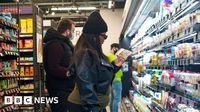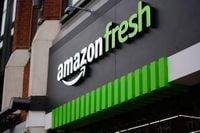Amazon, the global e-commerce titan, has announced plans to shutter all 19 of its Amazon Fresh grocery stores in the United Kingdom, less than five years after launching the high-tech, till-free concept in London. The decision, revealed on September 23, 2025, marks a significant shift in the company’s grocery strategy and a recalibration of its brick-and-mortar ambitions in the UK. Of the 19 locations, five are set to be converted into Whole Foods Market stores, while the remaining 14 will close entirely. The move comes amid what Amazon describes as “a thorough evaluation of business operations and the very substantial growth opportunities in online delivery.”
Amazon’s first foray into physical grocery retail outside the United States began in March 2021, with the opening of its Amazon Fresh store in Ealing, London. These stores, featuring the company’s “Just Walk Out” cashierless technology, allowed customers to pick up their items and leave without stopping at a checkout—payment was handled automatically via the Amazon app, using a combination of in-store cameras, computer vision, and sensors. During the pandemic, the concept caught the public’s imagination, offering a contactless, frictionless shopping experience at a time when minimizing human contact was paramount.
However, as pandemic restrictions eased, the novelty of cashierless shopping seemed to wane. According to reporting by Seeking Alpha, the contactless model “failed to gain traction once pandemic restrictions were lifted.” Industry analysts have echoed this sentiment. Forrester’s Sucharita Kodali told the BBC, “It’s unlikely that Amazon Fresh has created a differentiated offering and it may not even have ideal locations, so it’s probably not been set up well for success from the start.” Danni Hewson, head of financial analysis at AJ Bell, added that the till-less technology “always felt a little awkward,” and noted, “Amazon’s strength is in convenience of delivery and it’s no surprise that as one door closes many more van doors are set to open.”
Amazon’s UK country manager, John Boumphrey, emphasized the company’s continued commitment to innovation and investment in the British grocery market. “Since 2008, we’ve worked hard to innovate to help our customers save time and money when shopping for groceries and household essentials,” Boumphrey said. “We continue to invent and invest to bring more choice and convenience to UK customers, enabling them to shop for a wide range of everyday essentials and groceries with low prices and fast delivery through Amazon.co.uk, Amazon Fresh, and Whole Foods Market stores, alongside our third-party grocery partners, including Morrisons, Co-op, Iceland, and Gopuff.”
The shift away from physical Fresh stores comes as Amazon doubles down on its online grocery delivery services in the UK. The company currently offers more than 2 million grocery and household essential products through its main UK website, Amazon Fresh online, Whole Foods Market, and delivery partnerships with supermarket chains Morrisons, Co-op, Iceland, and the delivery platform Gopuff. By early 2026, Amazon aims to more than double the number of UK Prime members who have access to three or more online grocery delivery options through its partners. With this expansion, over 80% of UK Prime members would be able to shop at least one of its four grocery partners.
Amazon’s ambitions don’t stop there. In 2026, the company plans to add perishable groceries to millions of products available on Amazon.co.uk with same-day delivery—a service it recently launched in more than 1,000 cities and towns across the United States. According to Amazon, growth in the grocery category is outpacing the rest of its UK business. In 2024 alone, the company delivered hundreds of millions of everyday essentials in the UK with same or next day delivery, representing a nearly 20% year-over-year increase. In the first quarter of 2025, Amazon’s everyday essentials category—which includes groceries and household items—grew nearly twice as fast as all other categories in the UK and now represents nearly one out of every three units sold on Amazon.co.uk.
The closure of Amazon Fresh stores also reflects broader challenges facing brick-and-mortar retailers in the UK. According to Fast Company, the country lost 13,500 shops in 2024, a 28% increase over the year before, as retailers grappled with rising operating costs, more price-conscious consumers, and tariff uncertainty. Amazon’s decision is not entirely final; UK law requires a formal consultation period with employees in cases of large layoffs. The company has stated that it will “offer redeployment opportunities to as many affected employees as possible.” About 250 staff work at the Amazon Fresh stores, and the GMB union, which represents some of these workers, has criticized Amazon’s approach, stating, “Considering Amazon are one of the richest companies in the world, the cavalier way in which they treat staff, and hire and fire them, speaks volumes about their ethics. Frankly, workers deserve better.”
Amazon’s rapid pivot is not without precedent. The company has a history of starting and ending ventures at speed. In 2024, it ended a nine-month experiment with robot security guards. Despite the closures, Amazon remains a formidable force in grocery retail. The company still operates 64 Amazon Fresh stores across nine US states and more than 500 Whole Foods Market locations worldwide. In March 2025, Amazon opened a new Whole Foods Market store on King’s Road in Chelsea, London—the first new UK Whole Foods since 2014. With the conversion of five Fresh stores, the Chelsea store, and another planned location in Greater London by the end of 2026, Amazon would have 12 Whole Foods stores in the UK.
Amazon Fresh stores, which offered cheaper, mass-market items compared to the more upscale Whole Foods, were seen as an experiment in blending technology with traditional grocery shopping. Yet, the experiment has not yielded the results Amazon hoped for in the UK. As CNN noted, Amazon CEO Andy Jassy remains “bullish” on grocery as a significant business for Amazon, but the company is now focusing on the sectors where it sees the greatest growth—namely, online delivery of everyday essentials and groceries.
For customers, the closure of Amazon Fresh stores may come as a disappointment, especially for those who enjoyed the futuristic, checkout-free experience. But for Amazon, the move signals a renewed focus on what it does best: leveraging its logistics network and digital platform to deliver convenience, speed, and selection to millions of households. As Amazon continues to invest in online grocery delivery and expands its Whole Foods footprint in the UK, the company’s next chapter in British grocery retail is already taking shape—one that is less about physical stores and more about meeting customers wherever they are, however they want to shop.





